If you encounter Walker T. Roman’s paintings at the Chilmark Flea or Edgartown Village Market, you might spot two works that seem to have little in common. One might be a dynamic Island scene of waves crashing against rocks, a work that epitomizes his figurative style. Another might be an abstract work, strokes of gray on a circular canvas.
But after gazing at the boulders amidst the waves in the Island scene, you’d begin to see the abstract brushstrokes within the figurative work.
“The language is the same, it’s just a matter of changing the context,” Walker said during a recent interview at his West Tisbury home, as haughty turkeys sauntered through his garden. To compare his abstract and figurative styles, he uses the analogy of two sides of a tapestry. “On one side is the image,” he said, “and on the other side is how it works.”
Walker has only recently begun to show his two painting styles together, the latest development in his journey of becoming a professional artist.
“I’ve been painting as long as I can remember,” he said, recalling inspiration taken from art programs in Island schools. The inflection point for his artistic development, Walker said, came during a trip to the Metropolitan Museum of Art in New York, where he saw Boy in a Red Waistcoat by Paul Cézanne.
“I think it was the first time I ever really saw a painting,” he said. “Every moment I spent looking at it I found more to see.”
From then on Walker pursued a career as a professional artist. Working a stint as an assistant at the Martha’s Vineyard Public Charter School gave him both the flexibility and inspiration to pursue that goal. “Watching children having these big "aha!" moments was very cool,” he said, “and I had summer vacation from the job so I could do the markets.”
Working with children also helped him gain a different perspective on how to approach his art, one he still looks back on as he continues to sell at summer markets. By way of explanation, Walker recalled a comment made by Jackson Pollock. “You don’t need to understand the flower for it to be beautiful,” Walker said, paraphrasing Mr. Pollock. “I want people to look at my paintings like they are looking at a flower.”
But even if the beauty of a flower (or a painting) is obvious, there is still much going on beneath the surface, a fact evinced by Walker’s basement studio. His workplace is a crucible of creativity: precise, functional and stylish. A thick metal support pole, jutting through the center of the space, is peppered with magnetized pencils and brushes.
“That was the biggest "a ha!" moment for me!” he exclaimed, of the discovery of the pole’s magnetic properties. Indeed, Walker relishes the nuts and bolts aspects of the artistic process. For instance, when he couldn’t find a brush large enough to make the strokes he envisioned for his canvas, he jury-rigged three brushes into a tool purpose-built for the job.
“We’re so used to purchasing products that solve a particular problem for us,” he said. Putting in the time to solve them on his own, he said, keeps him in touch with the creative process.
After ensuring he has the right tool for the job, Walker also completes his theoretical preparation for his compositions. In a sketchbook on his studio desk, he lays out a planning sheet for one of his paintings, with an annotated matrix dotted with paint splotches, mapping out a color palate. Developing this “color gamut,” he said, helps him understand interactions between light and color in a scene.
Walker is acutely aware of the effects light can have on a work. While works in a gallery can be lit to his specifications, displaying his canvases en plein air means he is at the mercy of natural light.
But this too, Walker explained, has only sharpened his skills.
“In a painting I make now, I see in it a painting I was trying to make 10 years ago,” he said. Now, as he begins to sell his art at the Edgartown Village Market, who knows what the light of a new town might bring?
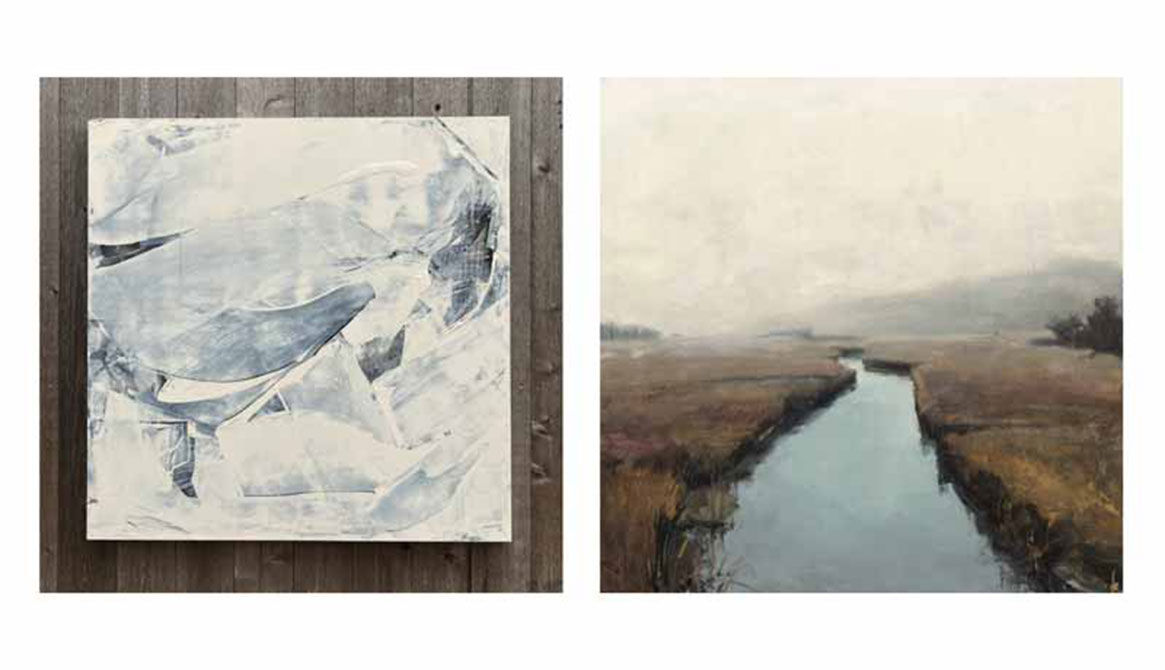
artwork courtesy Walker T. Roman
For more information on Walker T. Roman, visit walkertroman.com. This summer, Walker be at the Edgartown Village Market on Tuesdays and at the Chilmark Flea on Wednesdays and Saturdays.
Thomas Humphrey is a reporter for the Vineyard Gazette.





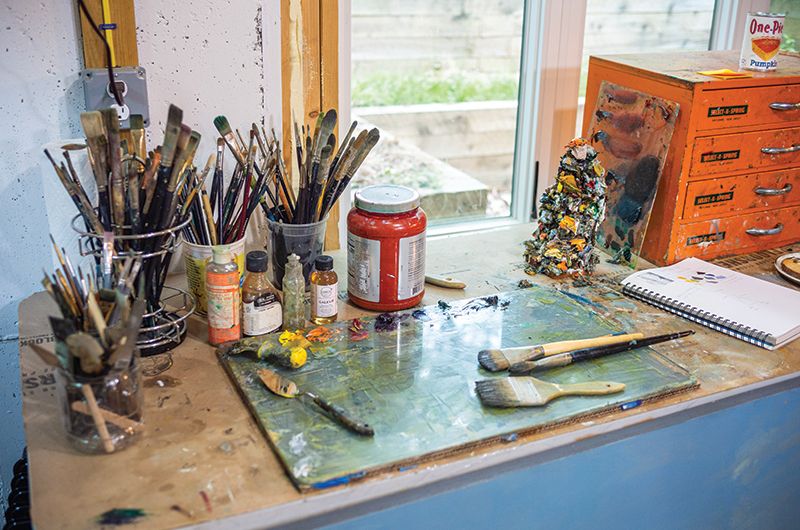
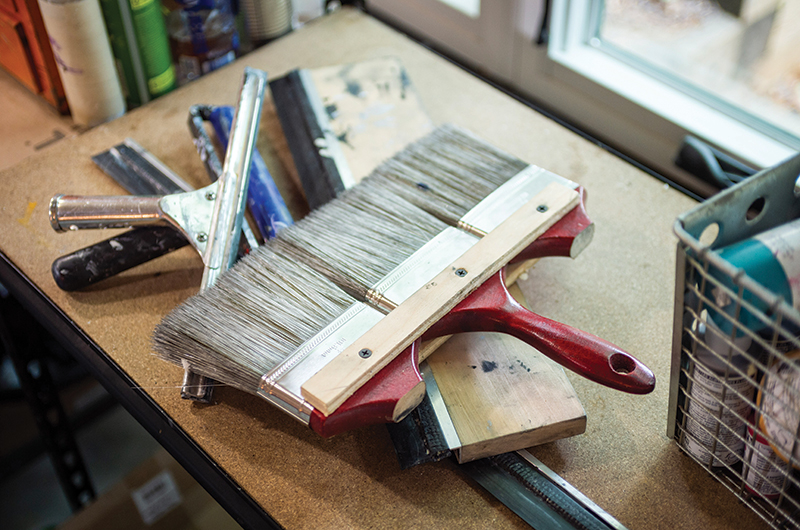
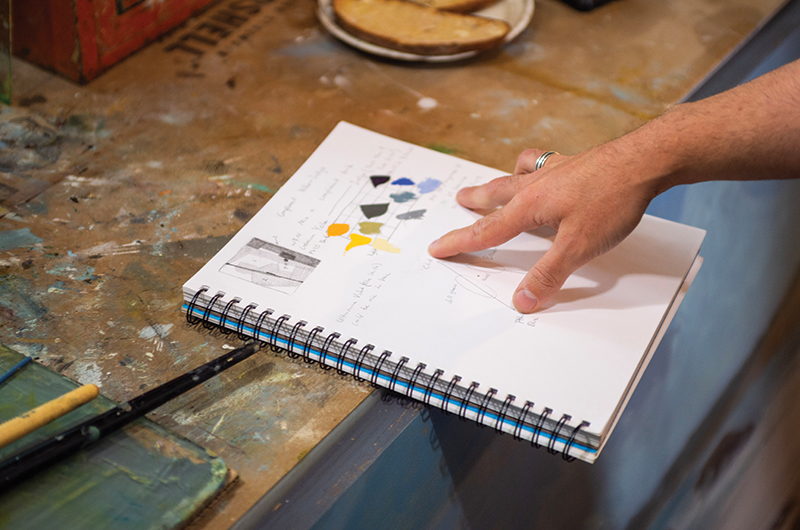



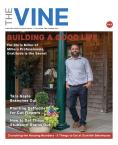


Comments